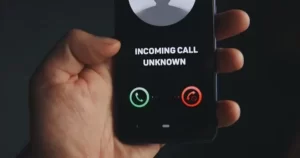Introduction
Having a non-electrical car is simple because we all understand that regular vehicles require gas, petrol, or diesel to function. This is not the case with EVs and their chargers which are a new technology for most of us.
Charging Types vs. Charging Levels
Charging levels are usually grouped into key bands – levels 1 to 3. Charging types on the other hand have to do with the mode of charging you need – AC/DC, slow, fast, or rapid.
Charging levels
Level 1 – Portable EVSE
- Suitable for small EV batteries in petrol-hybrid electric cars
- Mostly installed for home use and utilizes a 10 Amp port at 120V
- If you drive less than 4000 km per year, this charging level may suit your EV
- You do not require additional installations provided your home has a power access point
Level 2 – Wall chargers
- The most common public and home charging level
- EV is directly connected to the electric network through a dedicated circuit, port, and socket
- Has a high amperage and voltage, therefore, is quicker to charge. However, it requires stronger wiring and hardier equipment to endure the excess heat and electricity produced
- Having a 240 volts outlet, you are ensured of a driving range of 30-45 km per hour of charging
Level 3 – DC fast chargers
- A dedicated DC charger has power delivery levels of 25kW-350kW which is a three-phase current flow range of 40-500 Amp.
- Although expensive, DC chargers are faster than chargers on levels 1 and 2; used in commercial buildings, public places, and roadsides.
Charging types
There are three charging types, namely:
-
Trickle or slow charging
This is done via a type of charger that is found in most households where EV owners want to charge their cars routinely in the comfort of their homes. This charging type takes a long time to charge EVs completely. It has a power delivery of 1-1.4 kW, and can deliver a driving range of 13 to 17 km per hour of charging
You will need a cable control box when using trickle charging in your home for safety and peace of mind.
-
AC or fast charging
The power delivery for this charging type ranges from 3.9-19.2 kW. You can find it in public places including public parks, supermarkets, leisure spots, and shops. It will take about 2.5 – 4.5 hours to fully charge your 40kWh EV battery.
You should call trained personnel for the installation of your wall box if you are installing this type at home.
-
Rapid charging
A DC type of charging that charges your EV the fastest as it’s sustained by a direct current. It will take about 20 minutes to charge your EVs battery up to 80%. The power delivery is above 50kW with a current flow of 125A and 450V voltage. It uses a combined charging system – Combo DC.
Both levels 1 and 2 are AC-type chargers whereas level 3 is a DC charger type. A basic EV cable has two ports, one for the charge spot and the other for your vehicle. The type of EV and the station’s charging speed will determine which type of cable you need.
Conclusion
There is no universal adapter for every EV charger and car. However, different types of connectors can be compatible with various charging levels, making it easy for EV owners. For instance, AC connectors type 1 and 2 use AC sockets for household charging. For DC connectors, there is a type 2 Combined Charging System and CHAdeMO. They cannot be used interchangeably, therefore, you should know if your EV is compatible with the available connector at the charging station. For safety purposes, call an electrician to install your EV chargers at home without worries.


















Be First to Comment